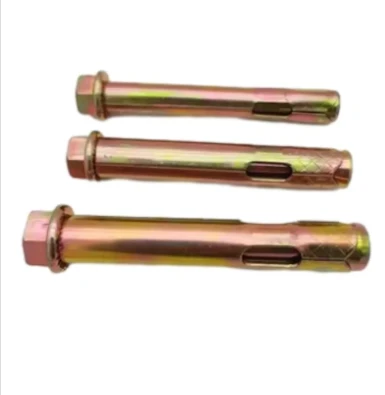Nov . 21, 2024 00:14 Back to list
m30 washer size
Understanding the M30 Washer Size A Comprehensive Guide
When it comes to mechanical engineering and assembly, the importance of washers cannot be overstated. Among the various sizes and types of washers available, the M30 washer size is one that often comes into play in a variety of applications. This article delves into the specifics of M30 washers, their dimensions, types, materials, and applications to provide a comprehensive understanding of their significance in engineering and construction.
What is an M30 Washer?
The designation M30 indicates that the washer is meant for use with an M30 bolt or screw, which has a nominal diameter of 30 millimeters. Washers are typically used in conjunction with bolts to distribute the load over a larger area, prevent damage to the surface being fastened, and enhance the overall stability of the assembly. The M30 washer serves to provide a better seating surface and prevent loosening due to vibration.
Dimensions of M30 Washers
M30 washers come with specific dimensions that adhere to international standards. Here are the typical measurements
- Inner Diameter The inner hole diameter of an M30 washer is usually slightly larger than 30 mm to accommodate the M30 bolt. It typically measures around 30.5 mm to 31 mm. - Outer Diameter The outer diameter of M30 washers can vary, but it generally ranges between 60 mm and 70 mm, depending on the type and application. - Thickness The thickness of M30 washers is also variable, usually between 2 mm and 5 mm, with thicker washers providing more strength and load distribution.
These dimensions can vary slightly depending on the specific standards employed, such as DIN (Deutsches Institut für Normung) or ANSI (American National Standards Institute), so it is essential to verify the specifications pertinent to your project.
Types of M30 Washers
M30 washers can be categorized into several types, each designed for specific application requirements
1. Flat Washers The most common type, flat washers distribute loads and protect surfaces. They are used in a variety of applications, from residential projects to industrial machinery.
m30 washer size

2. Spring Washers Known for their elasticity, spring washers, such as split or wave washers, are designed to absorb shock and maintain tension. They are ideal for applications where vibration is a concern.
3. Lock Washers These are designed to prevent loosening from vibration. Types include external tooth lock washers and internal tooth lock washers, which are used in automotive and machinery applications.
4. Sealing Washers Typically made of rubber or other elastic materials, sealing washers prevent moisture and contaminants from entering bolted joints.
Materials Used for M30 Washers
The material of M30 washers affects their performance and suitability for various environments. Common materials include
- Steel Galvanized or stainless steel washers are widely used due to their strength and durability. - Plastic Used in lightweight applications and when electrical insulation is required, plastic washers resist corrosion but may have lower load bearing capabilities. - Brass Known for its corrosion resistance, brass washers are often used in plumbing and electrical applications.
Applications of M30 Washers
M30 washers are utilized across a wide range of industries, including
- Construction Used in structural applications, securing beams, and bolting components together. - Automotive They play a critical role in assembling vehicles, ensuring parts remain securely fastened despite vibrations. - Manufacturing Common in machinery assembly where large bolts are prevalent, washers provide stability and reduce wear.
Conclusion
In conclusion, the M30 washer size plays a vital role in enhancing the functionality and longevity of various assemblies. Understanding its dimensions, types, materials, and applications allows engineers and DIY enthusiasts to make informed choices when designing or repairing structures. Whether you are working on a small home project or a large-scale industrial application, selecting the right M30 washer is crucial for ensuring safety, performance, and durability. Always consult relevant specifications and standards to choose the appropriate washer for your specific needs.


